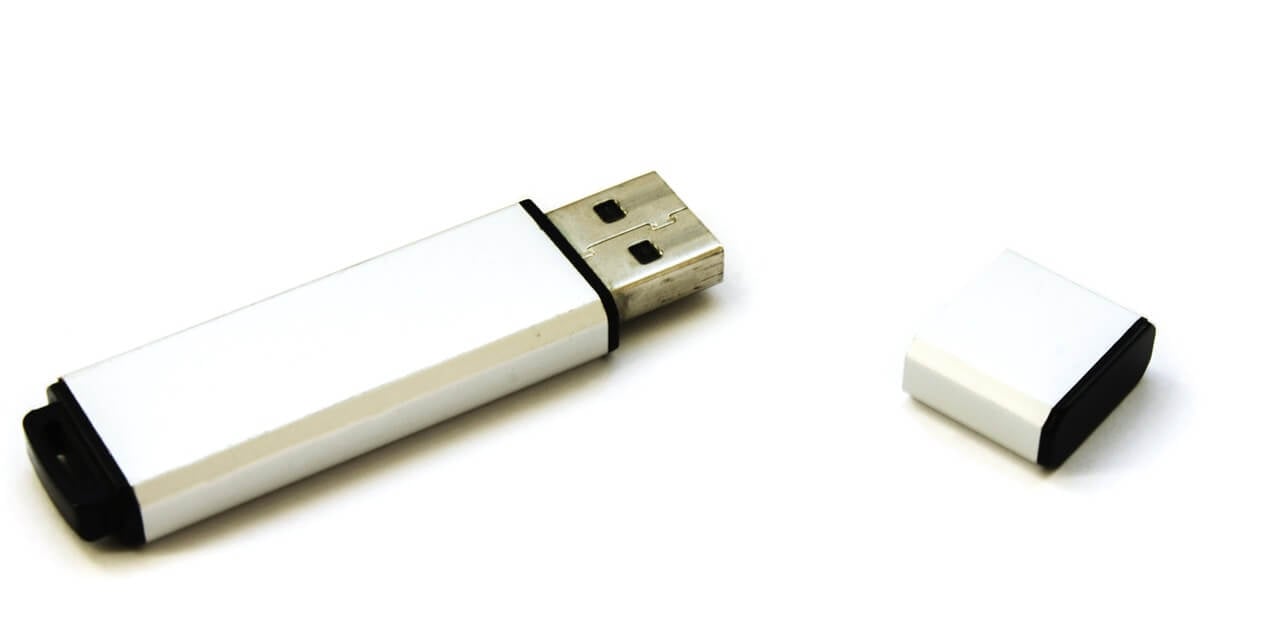- Fix: System Found Unauthorized Changes on the Firmware, Operating System or UEFI Drivers
- What is causing the System found unauthorized changes on the firmware error
- What is Secure Boot?
- Method 1: Disabling Secure Boot
- Method 2: Using a System Restore point
- Система обнаружила несанкционированные изменения в прошивке
- Found unauthorized changes on the firmware [QUICK FIX]
- My system found unauthorized changes on the firmware
- 1. System restore point
- The system found unauthorized changes on the firmware, operating system or UEFI drivers
- The system found unauthorized changes on the firmware, operating system or UEFI drivers
Fix: System Found Unauthorized Changes on the Firmware, Operating System or UEFI Drivers
Several users are struggling with the System found unauthorized changes on the firmware error at every startup or when trying to take their computer out of hibernation mode. Most affected users report that the issue started occurring after they installed some pending Windows updates. The issue is mostly encountered on Windows 7.
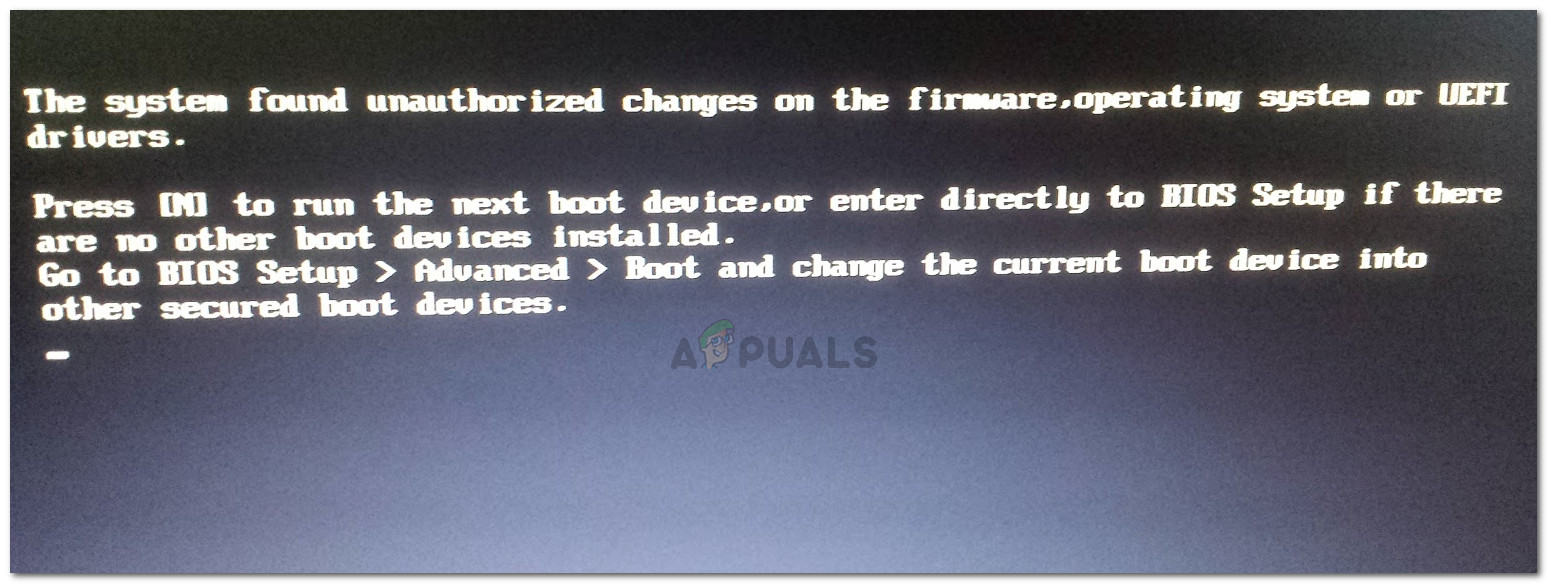
What is causing the System found unauthorized changes on the firmware error
We investigated this particular issue by looking at various user reports. This error will occur whenever your system is checking the firmware one some computer hardware parts as part of a new security feature. To be precise, the error is occurring because not all Windows versions will support this new security feature.
As it turns out, there are several scenarios that will lead to the apparition of this issue. Here are a couple of culprits that might trigger this particular error message:
- Optional Windows Update (KB3133977) – This Windows security update was released to patch a Bitlocker vulnerability. However, a lot of Windows users have reported that this supposedly changes the firmware signature, leading to this particular warning message. This is mostly encountered with ASUS motherboards. In this scenario, the message is benign, meaning that the system is still able to boot up and run normally.
- The computer is running into a Secure Boot violation – Most likely, the computer’s bootloader has been replaced with one that is improperly signed by Microsoft. This is known to happen on Windows 7 (and older) machine that has recently installed some pending updates. Apparently, some of these updates will force Secure Boot to be enabled on Windows 7, even though Windows 7 does not support Secure Boot.
What is Secure Boot?
Secure boot is a newer security standard developed by the leading members of the PC industry in order to ensure that a device can safely boot using only software trusted by the OEM (Original Equipment Manufacturer). Secure boot verifications are done at every startup – when the PC starts, the firmware checks the signature of each piece of boot software.
The error at hand is occurring because the OS version is not designed to support Secure Boot – even tough a few Microsoft security updates will enable this security feature automatically (as soon as they are installed).
If you’re struggling to resolve this particular issue, this article will provide you with a couple of verified troubleshooting methods. Below you have a couple of fixes that other users in a similar situation have successfully used to get the issue resolved. For the best results, follow the methods below in order until you discover a fix that successfully resolves the System found unauthorized changes on the firmware error in your particular scenario.
Method 1: Disabling Secure Boot
If you have Windows 7, it’s extremely likely that this error is occurring is because a recent Windows security update enabled a security feature which your Windows version doesn’t support.
If this scenario applies to your current situation, you can resolve the issue by simply disabling the Secure Boot feature from BIOS or UEFI settings. Of course, steps of accessing your BIOS or UEFI settings will slightly be different depending on your motherboard manufacturer.
Immediately after you start your PC, you’ll need to press the BIOS/UEFI key repeatedly until you enter the settings menu. Typically, the BIOS key is one of the F keys (F2, F4, F6, F8) or the DEL key (for Dell computers). With most motherboard manufacturers, you can typically see the BIOS key listed in the initial startup sequence.
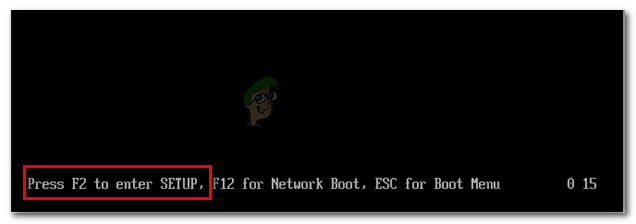
Once you get into your BIOS/UEFI settings, look for a Boot tab (or option) and see if you are able to find any option named Secure Boot. Once you do, access it and change the OS Type from Windows UEFI mode to Other OS. What this basically does is effectively disable Secure Boot, reverting the startup procedure to the old behavior.

Once the Secure Boot option has been changed to Other OS, save the BIOS/UEFI changes and reboot your computer. At the next startup, your computer should boot up normally and you won’t see the System found unauthorized changes on the firmware error anymore.
If this method wasn’t applicable or you’re looking for a different method to resolve this issue, move down to Method 2.
Method 2: Using a System Restore point
Another way to go around solving this problem is to use a System Restore point to revert your machine state to a point where the update causing the BIOS change was not installed. Several users have reported that this approach enabled them boot normally without encountering the System found unauthorized changes on the firmware error.
But keep in mind that unless you follow through with all the below-specified steps to prevent the update causing the issue from installing, you will encounter the same error again once Windows Update decides to install it again.
Here’s how to resolve the issue by using an older System Restore point:
- Insert the Windows installation media and press any key at the prompt to boot from it at the beginning of the startup sequence.
Press any key to boot from installation media
- Once you arrive at the first window, click Next, then click on Repair your computer link.
Click the Repair my computer link
- After a short while, the Startup Repair utility will start performing a series of scans on your OS. When you see the Startup Repair prompt, click the Restore button.
Click the Restore button
Note: If the Startup Repair prompt never shows and you are presented with the System Recovery Options directly, click on System Restore.
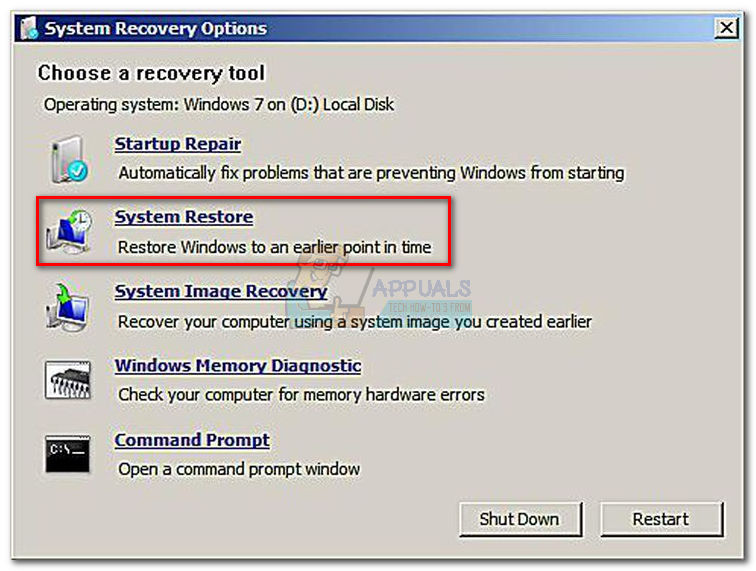
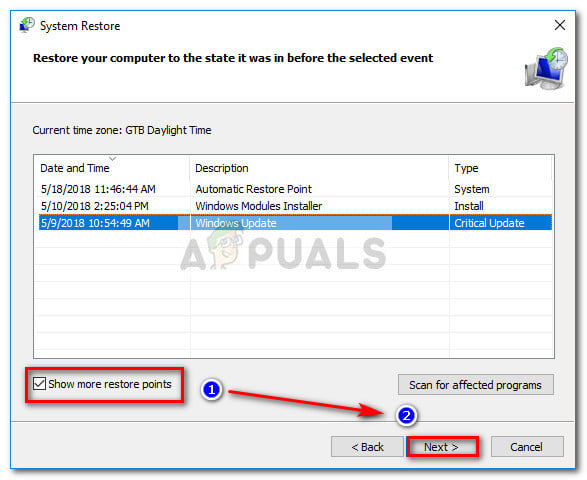 Enable Show more restore points box and click Next
Enable Show more restore points box and click Next Confirm that you want to restore your machine using a System Restore Point
Confirm that you want to restore your machine using a System Restore PointNote: Even though you no longer encounter the error, for now, it will return swiftly unless you follow the next steps below to ensure that Windows Update will not install the troublesome update again.
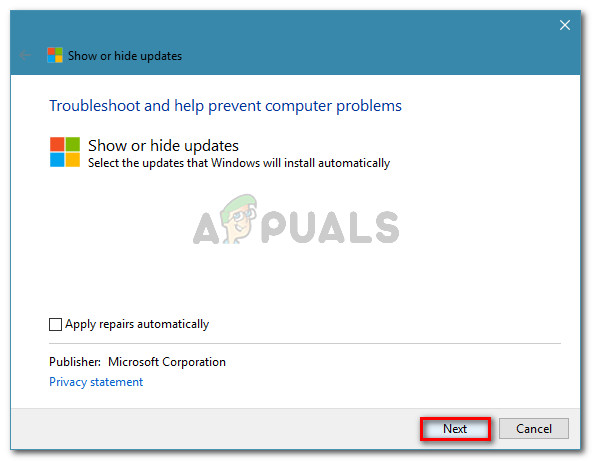 Uncheck the Apply repairs automatically box and click Next
Uncheck the Apply repairs automatically box and click Next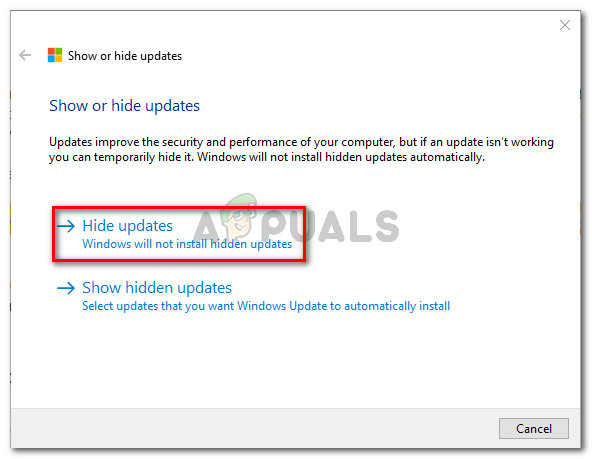 Click on Hide Updates
Click on Hide UpdatesThat’s it! You can continue using your machine without worrying that WU will install the optional security update again and the System found unauthorized changes on the firmware error will resurface.
Система обнаружила несанкционированные изменения в прошивке
У меня есть компьютер с материнской платой Asus под управлением Windows 7 Pro. Вчера я установил последние обновления Windows, перезагрузил компьютер и вскоре после этого перевел компьютер в режим сна.
Этим утром на не спящем я получил черный экран с:
Единственный способ загрузить его — это изменить ОС защищенной загрузки BIOS на «другую ОС», то есть, я думаю, это означает, что безопасная загрузка фактически отключена.
В последнее время аппаратных изменений в этой машине не было (последнее, что я изменил, было добавление дополнительной оперативной памяти около 3 недель назад, и с тех пор она успешно перезагружалась несколько раз). Не подключен CD / DVD или загрузочное USB-устройство.
Я запускаю полное сканирование MSE просто чтобы быть уверенным / параноиком. Возможно ли, что обновления Windows вызвали это? Должен ли я беспокоиться об отключении безопасной загрузки? Я попытался установить его обратно, чтобы включить, однако исходное сообщение появляется снова.
Windows 7 не поддерживает безопасную загрузку, отключите ее.
«Безопасная загрузка — это стандарт безопасности, разработанный представителями индустрии ПК для обеспечения того, чтобы ваш ПК загружался только с использованием программного обеспечения, которому доверяет производитель ПК».
Когда компьютер запускается, микропрограмма проверяет подпись каждого загрузочного программного обеспечения, включая драйверы микропрограммы (дополнительные ПЗУ) и операционную систему. Если подписи хороши, компьютер загружается, а встроенное ПО предоставляет управление операционной системе ».
Следующие версии Windows поддерживают безопасную загрузку: Windows 8.1, Windows Server 2012 R2, Windows RT 8.1, Windows 8, Windows Server 2012 и Windows RT ».
Found unauthorized changes on the firmware [QUICK FIX]
Have you recently tried to boot up your computer but before anything else you get hit by the message System Found Unauthorized Changes on the Firmware?
We know this might be frustrating, but there is no need to panic. We found a few solutions and possible reasons for this that we will share with you in the next article.
My system found unauthorized changes on the firmware
1. System restore point
- Insert the Windows installation media and boot from it in the beginning.
- In the first window that pops up, press Repair your computer.
- After the tool scans your operating system, it will give you the option to Restore to a previous point.
- After that, follow the steps in the prompt and select a system restore point dated before the occurrence of the issue.
However, by using this method, it is likely that you will encounter the issue again after a while.
It is advisable that you do not update your operating system for a while until a new fixed version occurs.
The system found unauthorized changes on the firmware, operating system or UEFI drivers
If your Windows 10 computer is not booting up and displays Secure Boot Violation – The system found unauthorized changes on the firmware, operating system or UEFI drivers error message on the screen, then you can follow this tutorial to troubleshoot the problem.
The full message usually says:
The system found unauthorized changes on the firmware, operating system or UEFI drivers.
Press [OK] to run the next boot device, or enter directly to BIOS Setup if there are no other boot devices installed.
Go to BIOS Setup > Advanced > Boot and change the current boot device into other secured boot devices.
This error message appears because of Secure Boot, which protects your system from running non-OEM signed boot software at the startup. The Secure Boot firmware scans for non-signed boot software at every startup, and if it finds anything unusual, it blocks the boot and shows such error message.
The system found unauthorized changes on the firmware, operating system or UEFI drivers
To fix this problem, you need to follow these two suggestions:
- Disable Secure Boot
- Use System Restore Point
The full process is mentioned below.
1] Disable Secure Boot
Secure Boot makes sure that when your PC boots up, it only uses firmware which is trusted by the manufacturer. However, many a time because of some hardware misconfiguration, you will need to disable Secure Boot in Windows 10.
To do this, you need to open your BIOS settings and disable Secure Boot in Windows 10.
After disabling Secure Boot and installing other software and hardware, it may be difficult to re-activate Secure Boot without restoring your PC to the factory state. Also, be careful when changing BIOS settings. The BIOS menu is designed for advanced users, and it’s possible to change a setting that could prevent your PC from starting correctly. Be sure to follow the manufacturer’s instructions exactly.
2] Use System Restore Point
If the above solution has not done anything positive to fix this problem, you need to use a System Restore Point. If you have previously created a System Restore Point, you have to use that to restore your computer to a state when you did not see this error message.
In case your computer does not boot normally, you can use a Windows installation media and then the Repair your computer option after running the Windows installation media. You can find several options, including Startup Repair, System Restore, System Image Recovery, etc.
 Press any key to boot from installation media
Press any key to boot from installation media Click the Repair my computer link
Click the Repair my computer link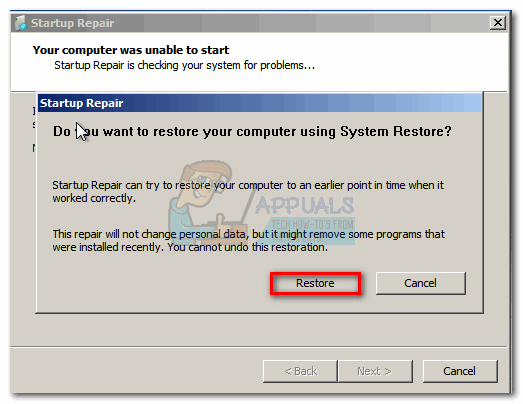 Click the Restore button
Click the Restore button 

